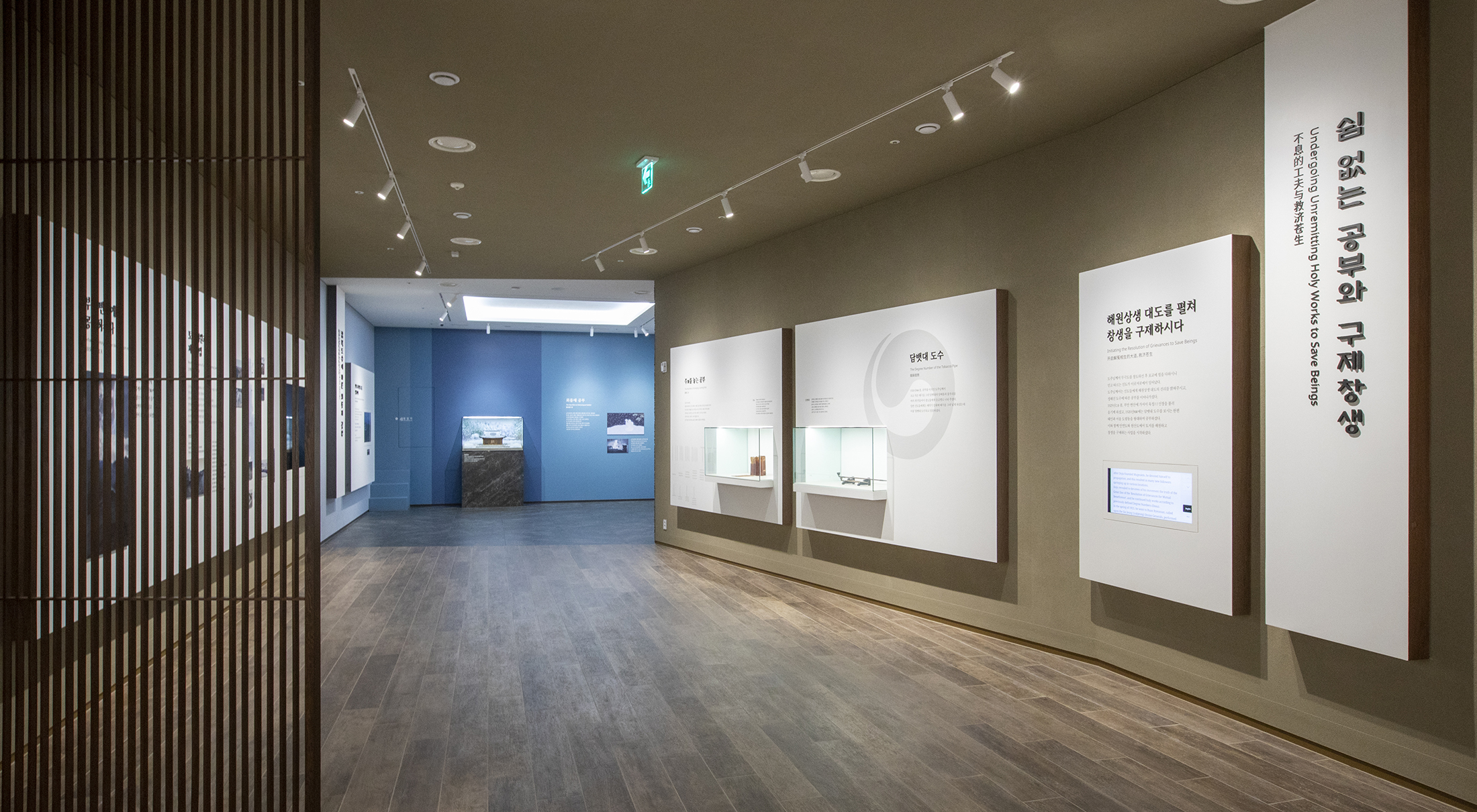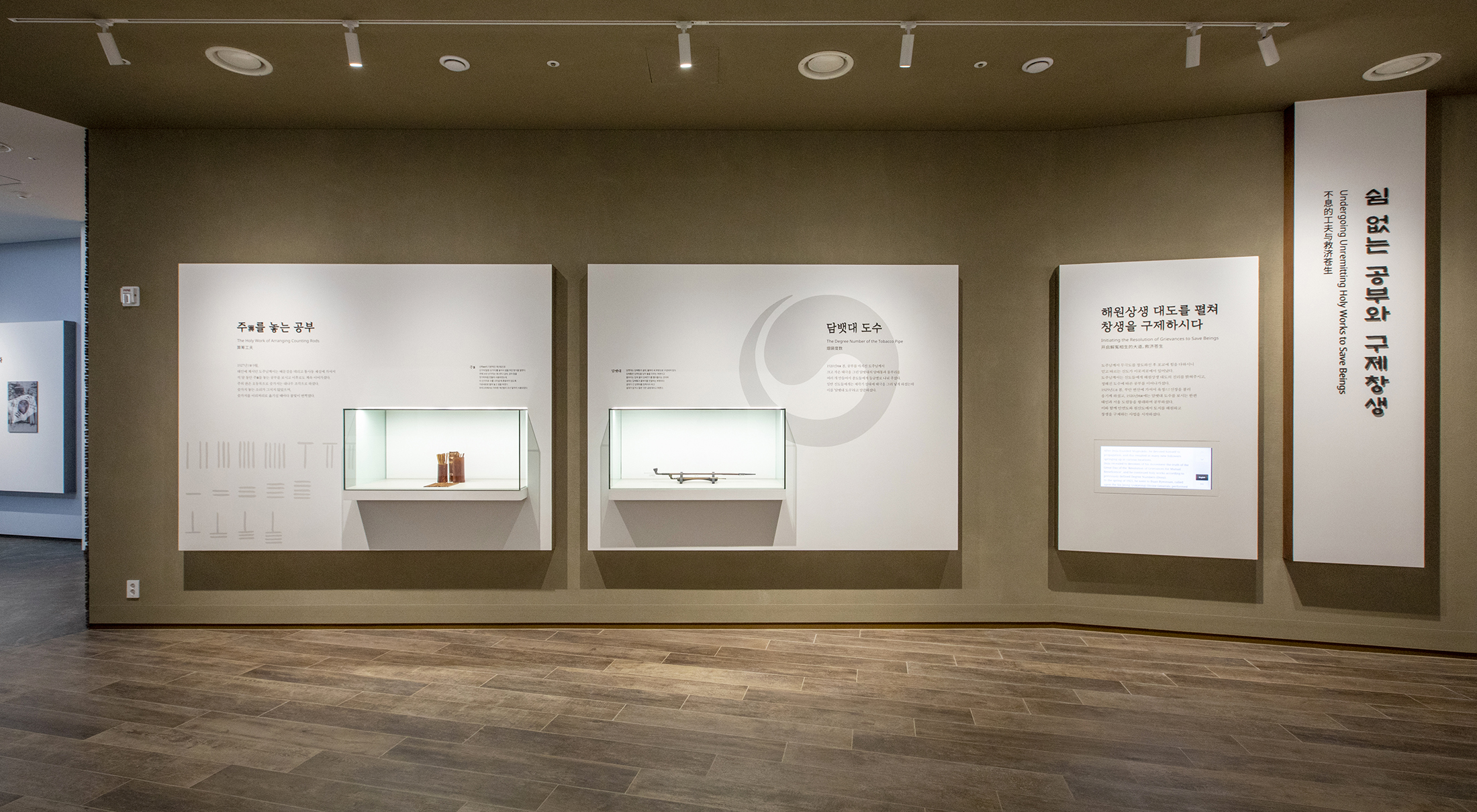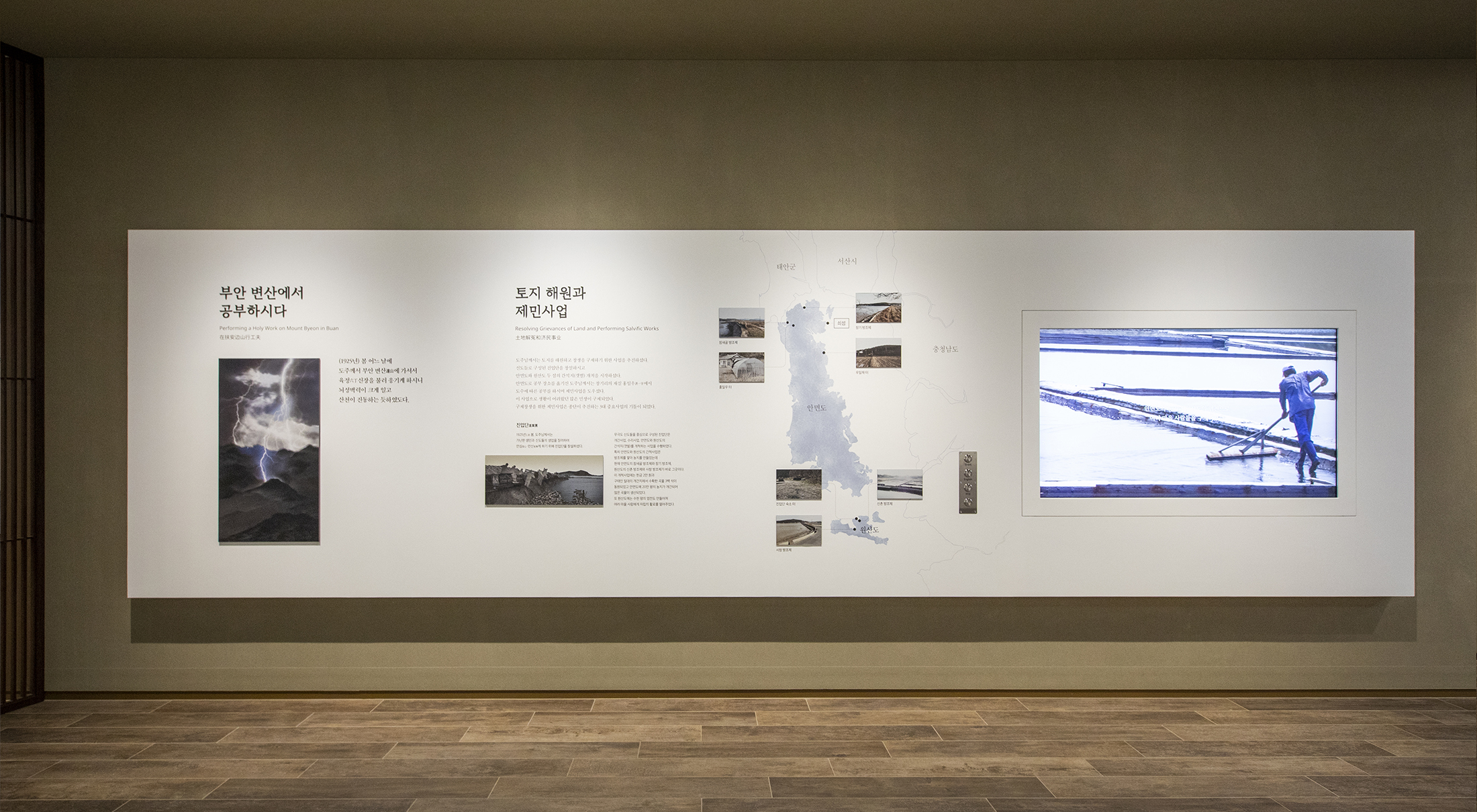The Completion of
the 50-Year Holy Work
-
Initiating the Resolution of
Grievances to Save All Beings
After Doju founded Mugeukdo, he devoted himself to propagation,
and this resulted in many new followers springing up in various locations.
Doju revealed to devotees of his movement the truth of the Great Dao
of the ‘Resolution of Grievances for Mutual Beneficence,’
and he continued Holy Works according to previously defined Degree Numbers (Dosu).
In the spring of 1925, he went to Mount Byeon in Buan,
called upon the Six Jeong (Yukjeong) Divine Generals, performed Holy Works,
and in 1926, he carried out the Degree Number of the Tobacco Pipe.
He went back and forth between Taein and Doryeom Town in Seoul to perform Holy Works.
At the same time, he started the societal works of land-related grievance-resolution
and relief projects on Anmyeon Island and Wonsan Island. -
Performing a Holy Work
on Mount Byeon in Buan
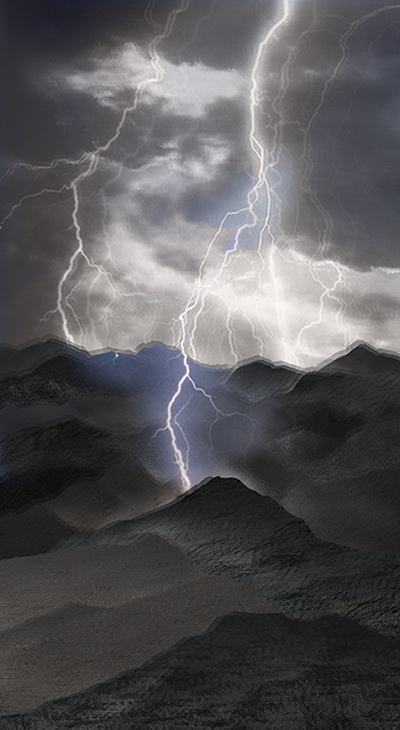 On a spring day in 1925,
On a spring day in 1925,
Doju went to Mount Byeon in Buan County
and called for a gathering of the Six Jeong (Yukjeong)
Divine Generals.
Then, great thunder and lightning came,
and mountains and rivers seemed to shake and tremble.-
The Degree Number of the Tobacco Pipe
On a spring day, in the Byeongihn Year (1926), Doju completed his Holy Work and proceeded to paint
big and small-sized Taegeuk (Yin-Yang) symbols on the bowls and mouthpieces of several tobacco pipes.
He then distributed these pipes to his disciples based on rank,
while directing some laity to paint the mark on the pipe stems themselves.
He referred to this as the ‘Degree Number of the Tobacco Pipe.’
The Tobacco Pipe
Tobacco pipes have three parts: a bowl, a stem, and a mouthpiece.
The bowl is the part that holds pressed tobacco leaves which are then lit on fire,
the mouthpiece is the part that the smoker holds in their mouth to inhale smoke,
and the stem is the part that connects the bowl and mouthpiece.
A pipe with a long stem is called a ‘long pipe,’
and a pipe without a stem or with a short stem is called a ‘short pipe.’ -
The Holy Work of Arranging Counting Rods
In the 9th lunar month of the Jeongmyo Year (1927),
Doju, who had been residing in Taein Township,
visited the memorial house in Tongsa Hamlet along with Bae Mun-Geol
and practiced the Holy Work of Arranging Counting Rods for three months in that location.
Afterwards, he continued that Holy Work.
He used a counting board made from paulownia wood and bamboo counting rods.
The sounds of putting the counting rods on the board did not stop,
and flashes of light followed whenever they were moved from one place to another.
Counting Rods
Counting rods were a method of counting that involved placing rods down
serving as a fundamental calculation technique during a specific historical era.
The counting rods, which visually resembled chopsticks,
were made from bamboo, metal, ivory, and other materials.
To prevent ambiguity when representing numbers with these counting rods,
counting was performed in both horizontal and vertical orientations.
In Korea, this calculation method remained popular until the end of the Joseon Dynasty.
-
Resolving Grievances of Land
and Performing Salvific Works
Doju initiated relief works to resolve the grievances of the land
and relieve people of agony. He founded the Jineopdan Team,
a group of devotees, and began developing tidal flats on the two islands
of Anmyeon Island and Wonsan Island.
While carrying out those relief works, he also performed Holy Works
according to Degree Numbers (Dosu) at a memorial house
named Hongil-woo in Changgi Village of Anmyeon Island.
Through various relief works, people who had been hampered by difficult lives
were rescued from their suffering.
That original spirit of performing relief works to save all beings became the basis
for the Three Major Works of Daesoon Jinrihoe. -
Organizing the Jineopdan Team
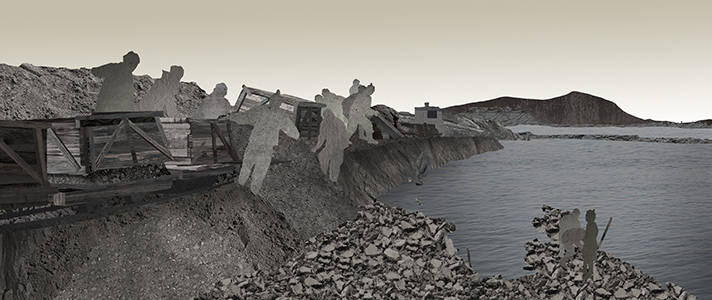
In the spring of the Eulchuk Year (1925), Doju founded the Jineopdan Team
to promote the livelihood of the poor in the community and his disciples as well.
He had them quiet their minds and quiet their bodies.
The Jineopdan Team was composed mainly of disciples of Mugeukdo.
They carried out land development, irrigation projects,
and tideland reclamation projects on Anmyeon Island and Wonsan Island.
In particular, the reclamation projects on Anmyeon Island and Wonsan Island
created farmland by stacking the seawalls.
These consist of the present-day Chamsaegol Seawall and Changgi Seawall
on Anmyeon Island and also Shinchon Seawall and Sachang Seawall on Wonsan Island.
The development projects mobilized 20,000 won worth of donation,
43,200 kilograms of grain harvested from the Gutaein area,
and 7,116,635 square feet of farmland reclaimed on Anmyeon Island
that also produced an abundance of grain.
In addition, tens of thousands of square feet of salt farms were created
on Wonsan Island. This opened up a path to independence
for a multitude of villagers all throughout the two islands.
-
The Degree Number of the Tobacco Pipe
The Completion of
the 50-Year Holy Work
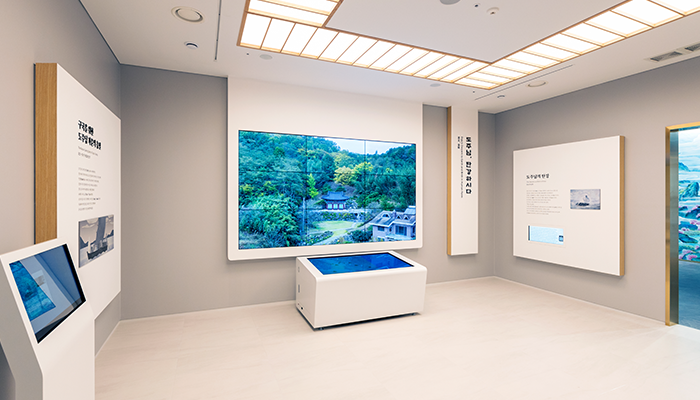
1Doju’s Descent and Birth
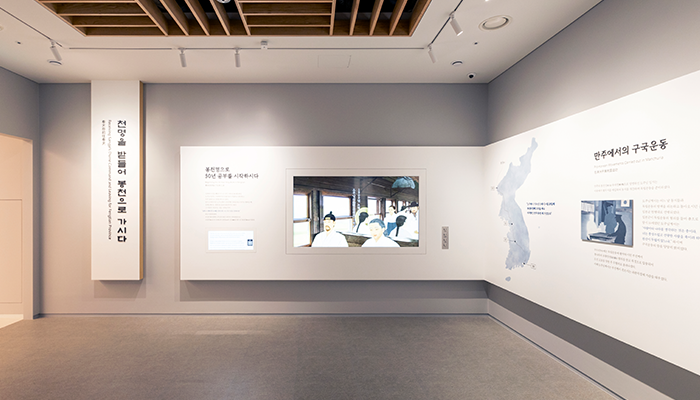
2Receiving Sangje’s Divine Command and Leaving for Fengtian Province
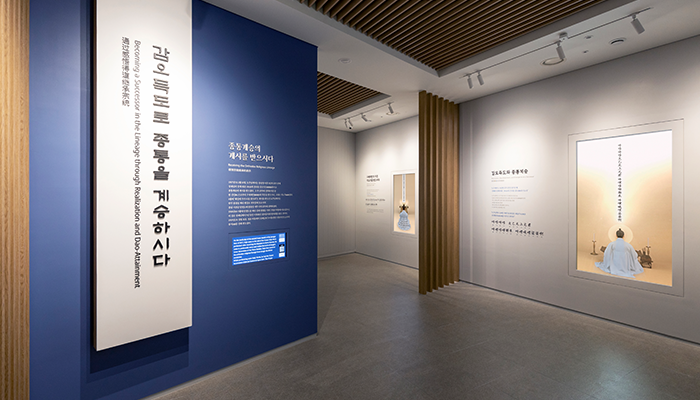
3Becoming a Successor in the Lineage through Realization and Dao-Attainment

4Following Divine Revelation by Returning to Korea and Laying a New Groundwork
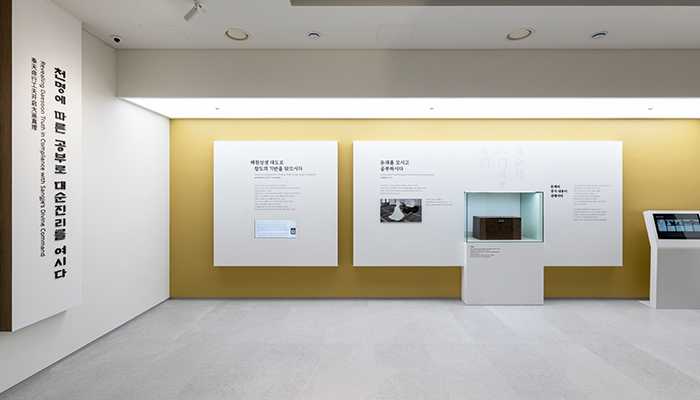
5Revealing the Daesoon Truth in Compliance with Sangje’s Divine Command
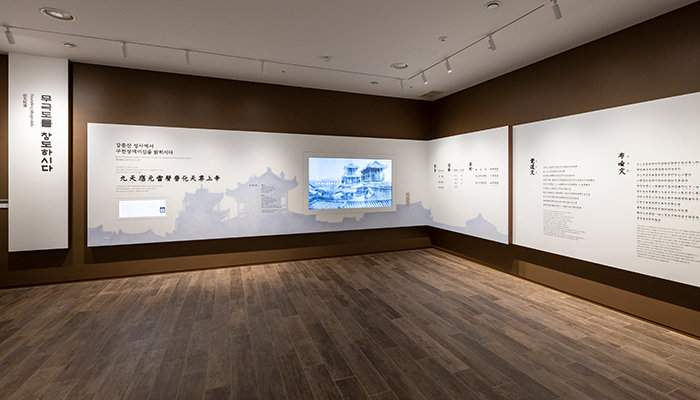
6Founding Mugeukdo
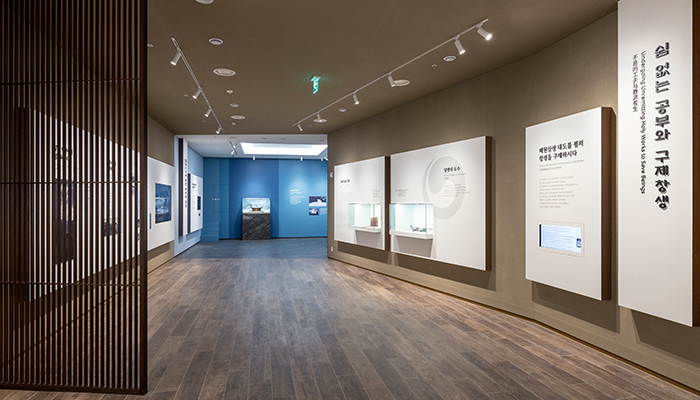
7Undergoing Unremitting Holy Works to Save Beings
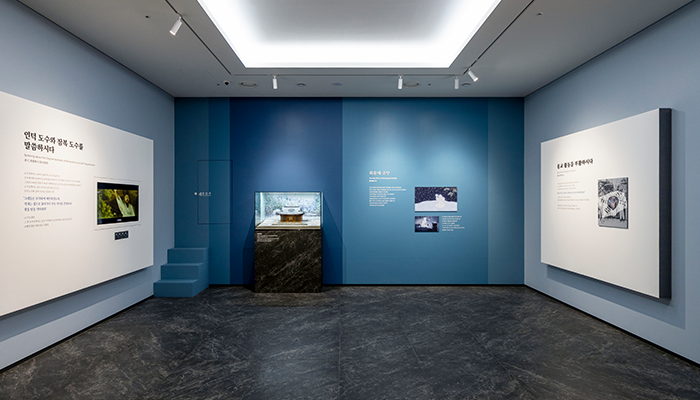
8The Holy Work at Hoeryong-jae Pavilion
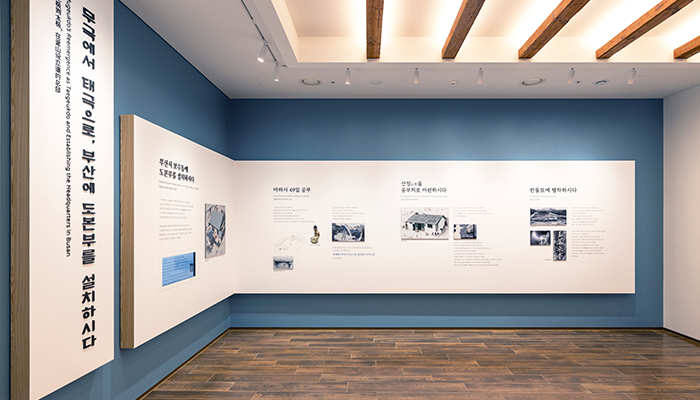
9Mugeukdo’s Reemergence as Taegeukdo and Establishing the Headquarters in Busan
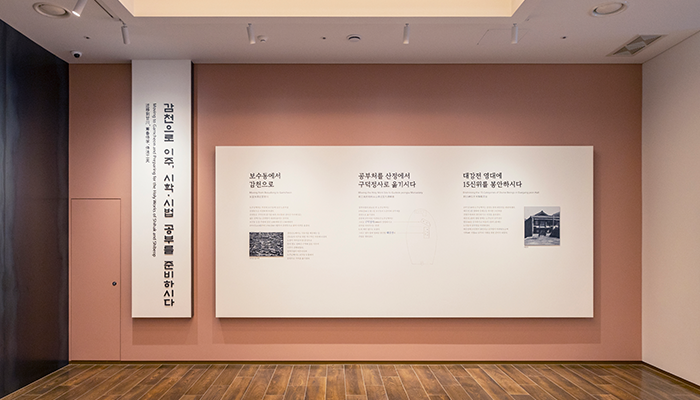
10Moving to Gamcheon and Preparing for the Holy Works of Shihak and Shibeop
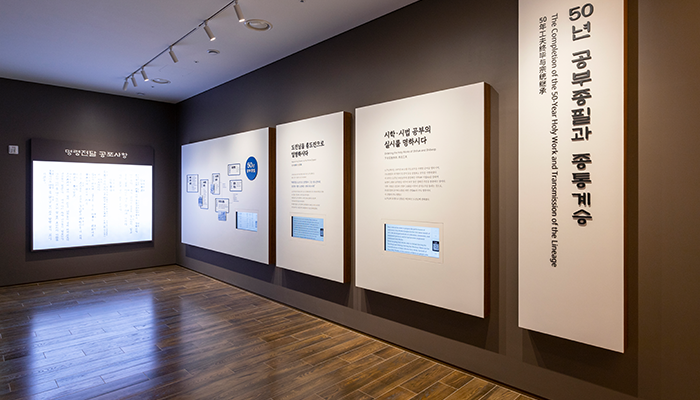
11The Completion of the 50-Year Holy Work and Transmission of the Lineage

